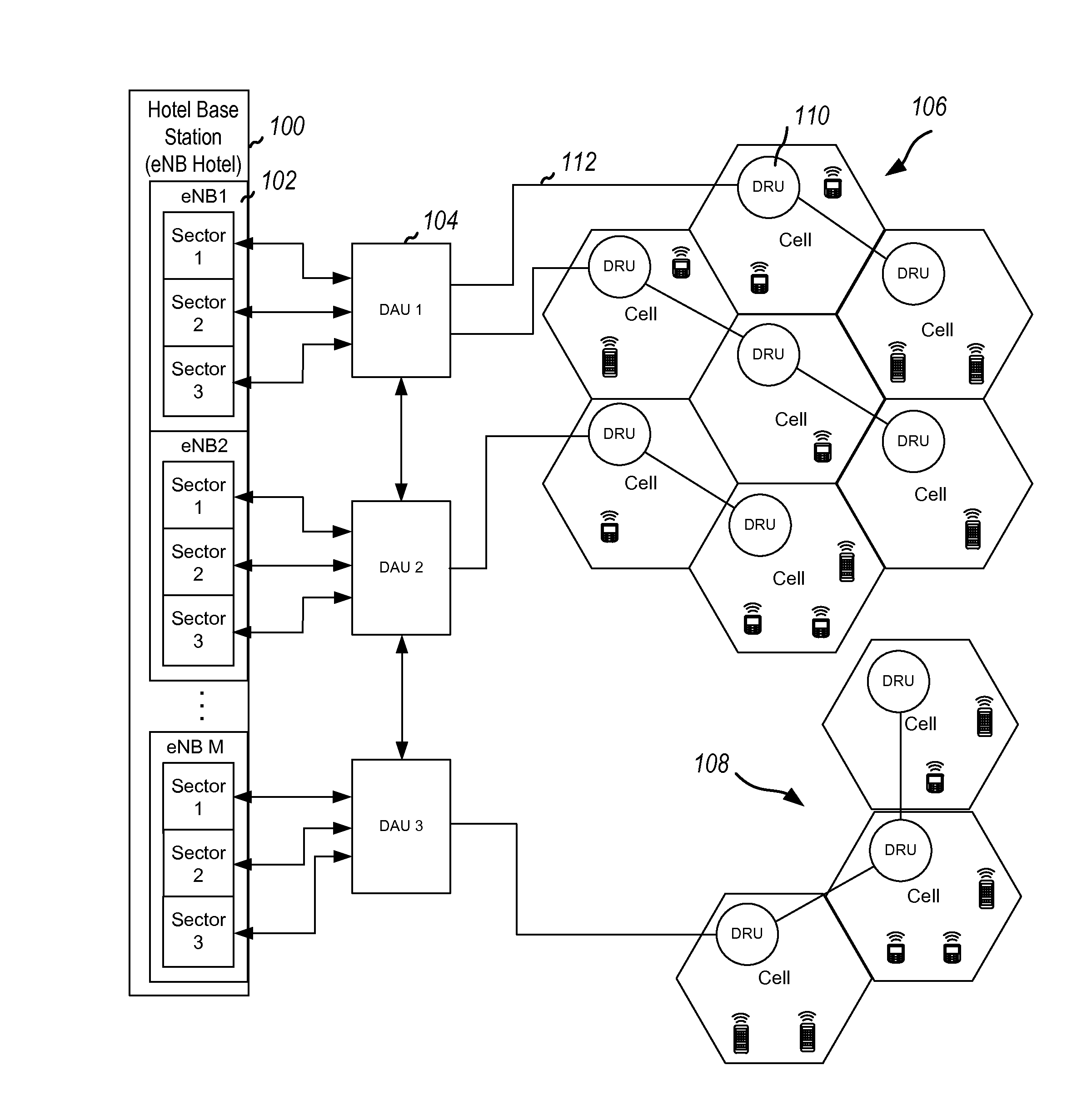Evolutionary algorithms for geographic load balancing using a distributed antenna system
a distributed antenna and geographic load balancing technology, applied in the direction of electrical equipment, wireless communication, etc., can solve the problems of common unbalanced traffic distribution and traffic hot spots in wireless networks, and achieve the effects of reducing handoffs and interferences, minimizing blocked and handoff calls, and effective use of resources
- Summary
- Abstract
- Description
- Claims
- Application Information
AI Technical Summary
Benefits of technology
Problems solved by technology
Method used
Image
Examples
Embodiment Construction
[0022]3GPP LTE is a promising candidate for next generation wireless networks. In the last 15 years there has been substantial growth in cellular mobile communication systems. It is imperative to provide a high quality of service (QoS) at a minimum cost. With the substantial increase in cellular users, traffic hot spots and unbalanced call distributions are common in wireless networks. This decreases the quality of service and increases call blocking and dropping. Inter-cell optimization in GSM and UMTS networks is usually delivered at the stage of network planning, and often done manually. As traffic environments change, the network performance will not be optimum. It is therefore necessary to perform inter-cell optimization of the network dynamically according to the traffic environment, especially when cell traffic loads are not uniformly distributed. This is one of the important optimization issues in self-organizing networks (SON) for 3GPP LTE. When the traffic loads among cell...
PUM
 Login to View More
Login to View More Abstract
Description
Claims
Application Information
 Login to View More
Login to View More - R&D
- Intellectual Property
- Life Sciences
- Materials
- Tech Scout
- Unparalleled Data Quality
- Higher Quality Content
- 60% Fewer Hallucinations
Browse by: Latest US Patents, China's latest patents, Technical Efficacy Thesaurus, Application Domain, Technology Topic, Popular Technical Reports.
© 2025 PatSnap. All rights reserved.Legal|Privacy policy|Modern Slavery Act Transparency Statement|Sitemap|About US| Contact US: help@patsnap.com



